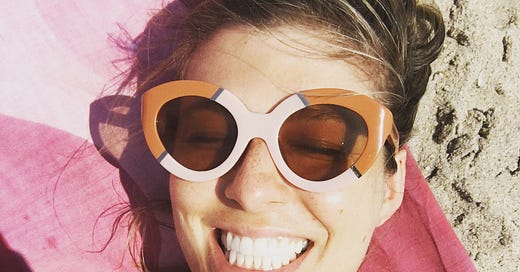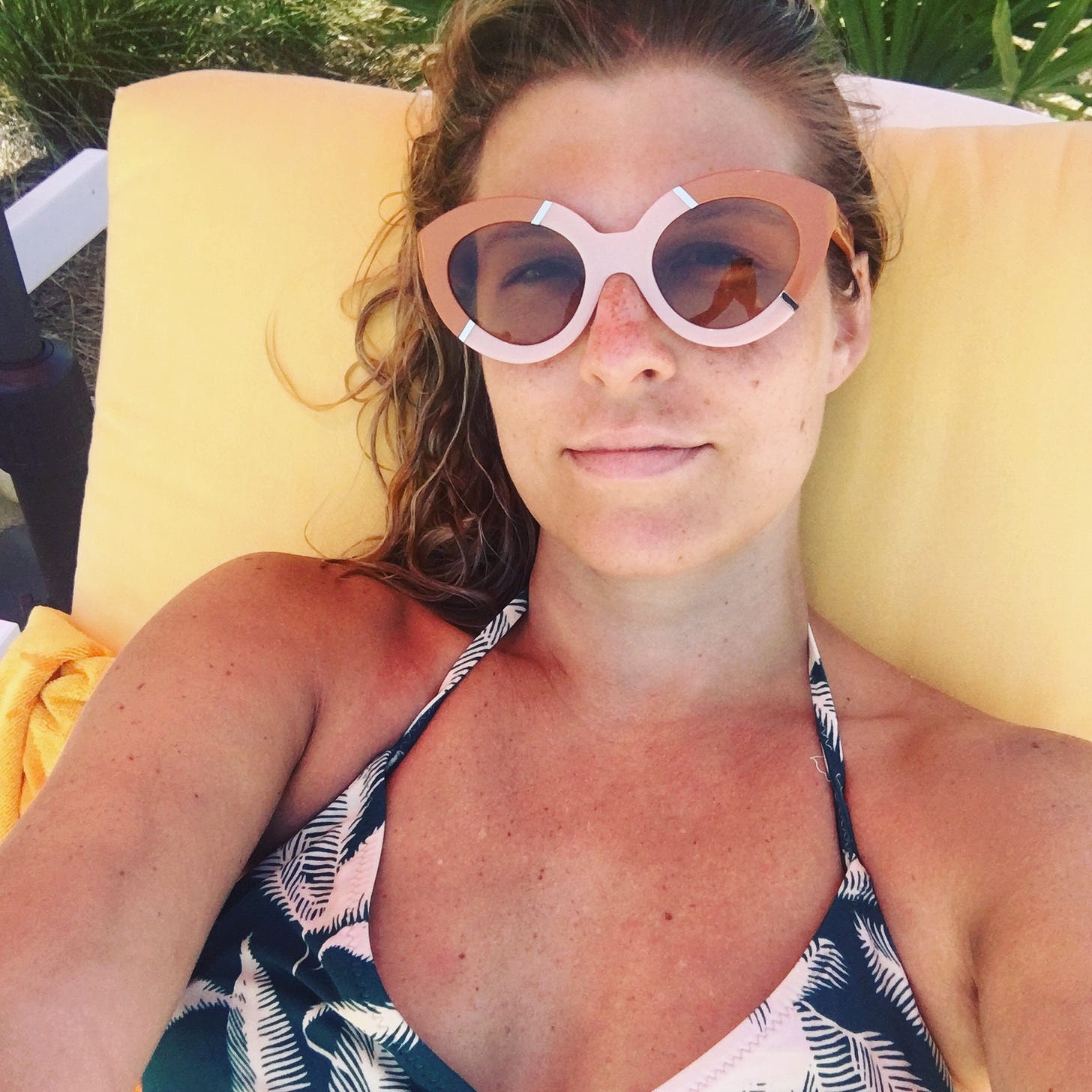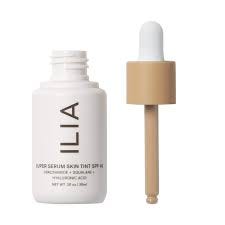Some people used baby oil. Some used a sunscreen-tinged spritz. I used Afro Sheen. Yes. On beating-hot afternoons by the pool, to enhance my tan (and also my chance of getting skin cancer), I sprayed Afro Sheen Shine Spray all over my body. Afro Sheen is an oil. It is meant to add shine to naturally textured hair. It is not meant for 17-year-old white girls to spray on their pasty skin in hopes of getting “a better tan.”
As a teen in the 90s, I was ignorant about a lot of things, and one of those things was sun care. But who didn’t favor the look of a radiant tan to finger-wagging warnings about sun damage? We are young! Invincible! Who cares?! But 20-something years later (gulp), I’ve seen with my own eyes what sun damage does to our skin and how prevention is a key part of that. Here’s my approach for winding back the clock and being smarter moving forward.
Intense Pulsed Light Treatments (IPL)
For years now, I’ve been seeing the lovely ladies at Body Anew Medical Spa in Madison, MS, where my parents live, for IPL treatments. What my mom, aunt, and I call “getting zapped.” IPL takes 5–10 minutes, and it involves having spots on your face (hyperpigmentation mostly) zapped with intense pulsed light to heat the cells in the skin and break them down. The pigment is pulled to the surface of the skin, scabs up, and falls off. (The irony of beauty treatments is in their “it get worse before it gets better” approach.) Each time I get zapped, I see a marked difference in my hyperpigmentation. But it’s not a one-and-done treatment. It’s something I do yearly and it isn’t made to treat scarring, fine lines, and/or loss of elasticity. So I started looking into ways to up the ante beyond zaps and the average facial.
Microneedling
My 40th birthday is on the horizon, and my night creams just aren’t cutting it like they used to. New hyperpigmentation continues to crop up, and after a constant string of breakouts that started during my first trimester and continued well after my daughter was born, my scarring is worse than ever. (I’m a picker.) So I went to see Crystal at Amelia Aesthetics here in Raleigh to see what my options were. I opted into multiple sessions of microneedling with the SkinPen, and even after one session, I can tell that my skin is brighter and clearer than before.
Sunscreen
Last but certainly not least: The Mother of All Sun Protection. But sun protection isn’t as simple as it used to be. We know a lot more about what chemicals in traditional sunscreen do to our oceans and how they are absorbed into our bodies. Here’s a quick primer.
Most traditional sunscreens, the ones you’ll find lighting up the front rows of your grocery store aisles, contain avobenzone, oxybenzone (also known as benzophenone-3), homosalate, octinoxate, octocrylene, and octisalate, which stabilizes avobenzone. These ingredients are not necessarily concerning on their own or in every dosage. It’s more nuanced than that.
Several of these ingredients offer broad-spectrum protection (both UVA & UVA protection—and if you forgot, UVAs are typically associated with aging and UVBs are known for burning). These ingredients filter out the sun’s rays, as opposed to simply blocking them with coverage, like mineral sunscreens. However, some of these ingredients have come to be frowned upon for a few reasons. If you’ve ever been pregnant, you’ll know traditional sunscreens are a no-no, and while there are a lot of studies and speculation, the answer as to which sunscreens are best is not so black and white. (Which is why you’ll likely be advised to wear mineral sunscreen during pregnancy because the liability is too high otherwise.) Here’s the gist.
Avobenzone, which is the ingredient that’s going to protect from both UVA and UVB rays, is not necessarily bad on its own, but it’s unstable. Meaning, after about 30 minutes in the sun, it begins to break down (which doesn’t offer much peace of mind!), so it needs octocrylene for stabilization. Octocrylene is an endocrine disruptor that releases free radicals. (Free radicals can increase signs of aging and cause cancer and all sorts of bad shit.)
Oxybenzone has been banned in places like Hawaii for its contribution to bleaching and killing coral reefs, which are essential to our marine ecosystem. (It may also affect fish). Oxybenzone is also believed to be a hormone disruptor. There’s too much info to include here in this meager newsletter, so if you’d like to know more about each of these ingredients, I found this article by the EWG to be informative.
In short, the FDA has acknowledged these less-than-optimal ingredients, which is kind of a big deal because the FDA approves all sorts of things that are, objectively, not great for our bodies. (One reason I drink natural, organic, and biodynamic wines is because the FDA approved 76 additives in conventional wines, including metals, toxic chemicals, added sugars, and fish bladders, to name a few.) But it’s essential to have regulation of some sort, so we’ll take the FDA for now.
It’s important to note, however, that some sun care includes these frowned-upon ingredients in smaller doses, which means the amount absorbed into the body is potentially less harmful. MD Solar Sciences, for example, is a “clean SPF skincare” brand, but their non-mineral Gleam & Glow SPF 50 contains 3% avobenzone, 2.75% octocrylene, 5% octisalate (to stabilize that avobenzone). Overall, not bad. Perhaps this small of a dosage can assuage people’s fears who aren’t yet ready for mineral sunscreens.
As of 2019, the only two sunscreen ingredients acknowledged by the FDA to be both effective and wholly safe for all bodies were zinc oxide and titanium dioxide, which are the main ingredients in mineral sunscreen. (That said, California wants you to know that titanium dioxide could lead to an increased risk of cancer. Is nothing safe?!)
When you think of mineral sunscreen, you may think about that hippie kid at the beach whose parents slathered them in a shield of liquid white, essentially giving them a streaked, Casper-like patina. It’s true that when mineral sunscreens were first catching wind, their aesthetic formulations were, uh, lacking.
But these days, there’s a wealth of efficacious and effective options for “clean” sun care, if you’re into that. (I put “clean” in quotes because there is no certified regulation on clean beauty. Anyone can call their product “clean,” so it’s up to us to read the labels and understand the ingredient list.) Now that you’re armed with all that information, here are a few of the sun care products I’m enjoying right now.
ILIA Super Serum Skin Tint SPF 40
Active ingredients: Non-Nano Zinc Oxide (12.0%). This provides protection from UVA, UVB, UVC, blue light, and pollution. This formula also contains active levels of Hyaluronic Acid, Plant-Based Squalane, and Niacinamide. (Source: Ilia.com)
Why I love it: This is my ultimate one-and-done skincare product. If I’m in a hurry or simply don’t feel like piling on moisturizer, sunscreen, and foundation, I use this creamy, flexible formula to get all the coverage I need. (I also sometimes wear the ILIA C Beyond Triple Serum SPF 40 for my no-makeup days.)
Kinship Self Reflect Probiotic Moisturizing Sunscreen
Active ingredients: Non-nano Zinc Oxide (22.4%), Turmeric, and Kinbiome, the brand’s specialty probiotic. (Which, TBH, I don’t know enough about topical probiotics to speak on their effectiveness, but I’m willing to try it.)
Why I love it: This creamy, lightweight formula has a hint of nude-toned iridescence and always leaves my skin looking dewy and feeling hydrated. I apply it after my moisturizer and before foundation.
Larkly SPF 30 Mineral Powder Sunscreen
Active ingredients: Titanium Dioxide (21%) and Zinc Oxide (15%), plus it contains other skin-supporting ingredients like tocopherol (a form of vitamin e), glycerin, ceramides, and resveratrol. It’s also free of sulfates, phthalates, paragons, petrochemicals, mineral oil, silicone, and talc. Plus, it’s fragrance free.
Why I love it: I like a powder sunscreen option for reapplication throughout the day or for quickly brushing on my face before a morning walk (knowing I’ll shower later and apply my full regimen). I use a mineral powder to set my foundation anyway, so it’s nice to have a non-liquid option for additional coverage.
We’ve come a long way since the 90s and my days of unbridled tanning, and there are so many incredible sun care options not mentioned here. This is just scratching the surface. So check your ingredient lists, get informed, (check out those facial treatments if you’re feeling spicy), and WEAR YOUR SUNSCREEN.









I learned so much! It’s so much more complicated than I knew! Thanks!